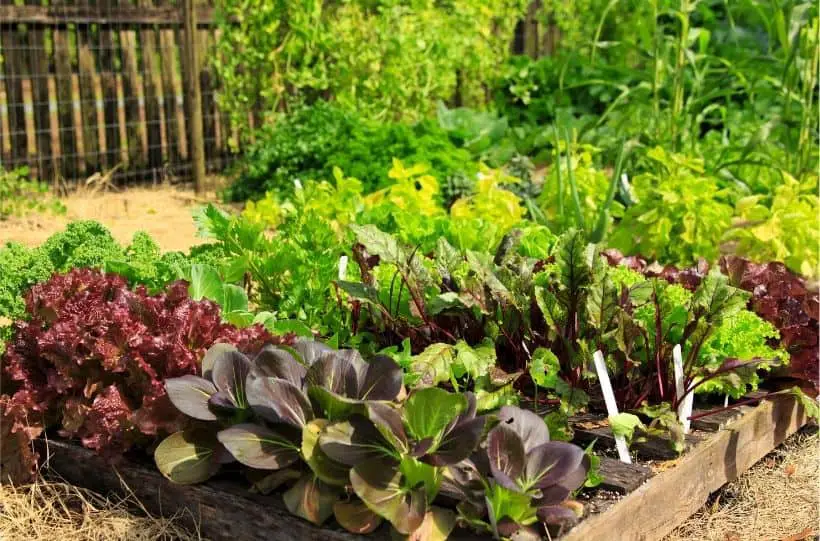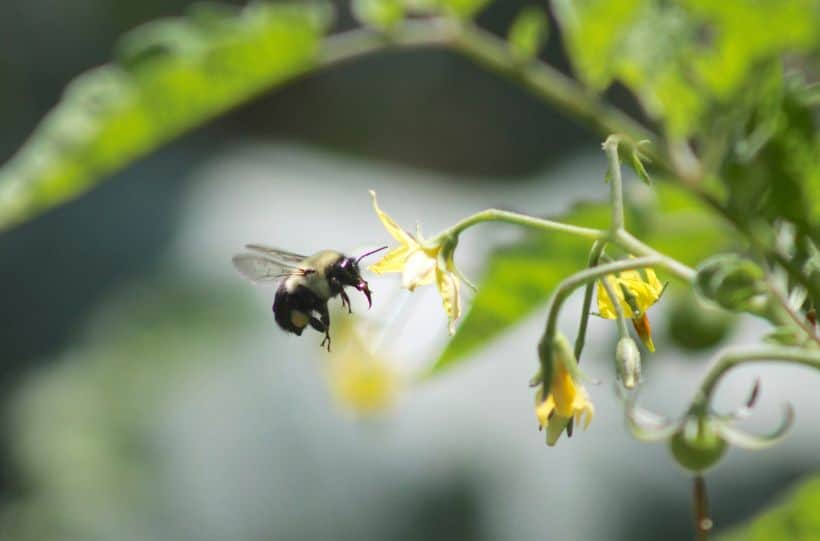How To Attract Pollinators To A Vegetable Garden
Any gardener will tell you that attracting pollinators to your garden is important if you want your plants to bloom. Even if you aren’t interested in growing flowers, this still applies to having a successful vegetable garden.
Though not all vegetables require pollinators to pollinate them, many plants do and will not develop from a flower to an edible crop without their help. Plants such as cucumber, tomatoes, squash, or melon, for example, all produce a flower that requires pollinating by pollinating insects.
If you grow or plan to grow any of these vegetables in your vegetable garden, you need to encourage pollinators to visit your garden.
This post will help with top tips on how you can attract pollinators to your vegetable garden and ensure a higher crop yield at the end of the growing season.

Which Vegetables Need Pollinators To Pollinate Them?
Not all vegetables require help from pollinators to grow. Many plants are self-pollinating, meaning the flower can pollinate without requiring external help from insects. The pollen is transferred from the anther to the stigma of the same flower.
Self-pollinating vegetables include beans, broccoli, cabbage, onions, cauliflower, carrots, corn, and many self-pollinating fruit trees such as pears, apples, and cherries.
Whereas cross-pollination is when a plant requires external support to pollinate, such as from the wind or insects. The pollen must transfer from one plant to another for pollination to occur.
Any vegetable that is botanically classed as a fruit requires pollinators. These plants produce flowers that need pollinating to develop into a crop and include squash, pumpkins, melons, zucchini, cucumber, tomatoes, swedes, peppers, and aubergine. If you choose to grow any crop from this list, you will need to also consider ways in which to attract pollinators to your vegetable garden.
What Pollinators Should I Attract To My Vegetable Garden?
Although all pollinators are beneficial to attract into your garden (which we will cover why in a moment), there are only a specific few that directly pollinate your vegetable garden.
These belong to the bee family!
Many varieties of bees are specifically attracted to flowers from your vegetable garden. For example, bumblebees are excellent pollinators of cucumber, eggplant, peppers, squash, and watermelon.
Whereas other native bees are attracted to specific varieties, such as the squash bee, as the name suggests, is attracted to flowers from squash and melon plants.
To attract bees into your garden, ensure to make your garden bee-friendly. Provide them with large-petalled flowers that they can use to curl up and sleep in during the night, plus a space where they can access fresh water.
By helping make your vegetable garden bee-friendly, you are also naturally creating a pollinator-friendly garden for many other species.
Although these pollinators do not directly pollinate your vegetable plants, they do help your vegetable garden in other ways.
They help to pollinate flowers and fellow companion plants within your vegetable patch. Plus, they offer a natural solution to pest control as many pollinators, such as flies and bats, will feed on a variety of pests, such as aphids.
How Do I Attract Pollinators To My Vegetable Garden?
Now you know which pollinators to focus on attracting and which plants you may need to draw their attention to, you can focus on how to attract pollinators to your vegetable garden. Take a look at these top tips below:
Plant Flowers
When planting flowers, you need to plan and be strategic rather than just planting anything anywhere.
As we are focusing mostly on attracting bees to your vegetable garden, you need to consider what type of flowers bees love.
Bees are attracted to plants that are vivid and bright. They prefer blue, purple, and violet but are also attracted to yellow, red, and orange.
Planting a mix of these flowers in your garden attracts not only bees but also other pollinators, such as butterflies and hummingbirds that also like bright flowers.

Another aspect to consider is not just providing one type of flower during the summer months. To attract large numbers of pollinators, you need a large variety of flowers that bloom during different seasons.
Consider planting a range of perennials and annuals in your garden. The perennials will create little maintenance needed from you each year but also provide food each year for pollinators.
Whereas, although annuals only bloom once and then need replacing the following year, they usually offer more nectar per flower and are brighter, hence appealing more to pollinators.
Leave Natural Wildflowers On Your Lawn
On top of actively planting a range of annual and perennial flowers in your garden, also consider mowing your lawn less, particularly during the summer months when lots of wildflowers bloom.
Bees especially love dandelions and rely on these as a food source during early spring. Allowing your lawn to grow slightly wild in between mowing will help attract pollinators to your garden and into your vegetable garden.
Companion Planting
Companion planting is when plants offer a benefit to one another without competing for resources and are planted together. This could relate to providing nutrients, attracting pollinators, or deterring pests away from your crops.
Companion plants can be vegetables within your vegetable garden, such as planting corn and squash together. But it can also work when specific flowers are planted in and around your vegetable garden.
Flowers such as marigolds, nasturtiums, and even sunflowers all work well planted in a vegetable garden.
When you plant brightly colored flowers with a high volume of nectar, you help to attract bees and other pollinators directly to your vegetable garden.
Provide Shelter and Water
Pollinators, just like any animal, also require water and shelter. Offer some bug hotels, especially one designed for solitary bees as shelter in your garden.
Bees also need access to water all year round, so it is important to offer a water source within your garden. You can create a simple water source with an area for bees to stand on without the risk of drowning. A simple plant tray or old container filled with a range of pebbles, leaves, and twigs will create an enticing space for bees and other pollinators to drink from.
If you are wanting to attract pollinators to your vegetable garden, ensure to follow these top tips and understand what pollinators are local to your area. Once you are aware of what vegetables you want to plant, spend time researching suitable companion plants that will benefit your vegetables but also attract pollinators.

For more top tips on creating a pollinator-friendly and pest-free garden, make sure to read these posts:

